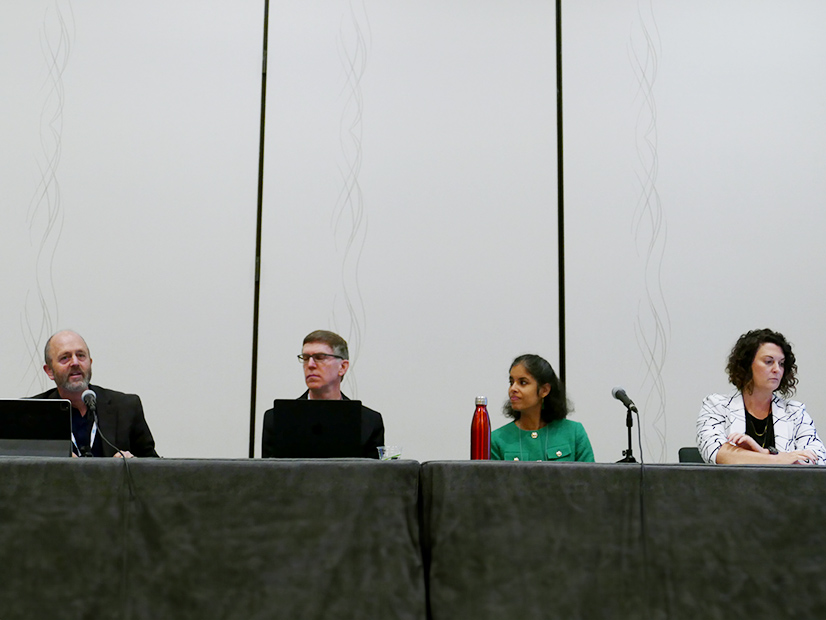
ANAHEIM, Calif. — Clean energy experts at this year’s Annual Meeting of the National Association of Regulatory Utility Commissioners last week expressed confidence in the U.S.’ progress toward decarbonizing the grid.
But just over a week after the U.S. re-elected former President Donald Trump, some also questioned how his plans to disrupt Inflation Reduction Act funding could impact the momentum of the energy transition.
“All the progress that’s been made in the last four years … there’s absolutely a concern that it [IRA funds] will get rescinded, paused or subject to infinite delays that cause them to be ineffective at transforming not just the economy, but the grid itself,” Sara Baldwin, senior director of electrification at Energy Innovation, told RTO Insider.
The IRA unlocked billions in funds and incentives for clean energy, but Trump has signaled an intent to roll back the historic climate legislation. (See Trump 2.0: Rolling Back Regulations, IRA Funding.) But because the U.S. doesn’t have a federal mandate for clean energy, Baldwin is counting on state policy and demand to maintain the flow of new clean generation onto the grid.
Speaking on a NARUC panel Nov. 12, Priya Barua, senior director of market policy and innovation at the Clean Energy Buyers Association, added that a “shift in the corporate mindset” has led to an exponential growth of companies that are voluntarily working toward “science-based targets” and “net-zero goals,” further stoking confidence in the buildout of clean energy.
“We’re in a really interesting and exciting juncture where there’s this opportunity to empower large energy customers, many of whom are driving some of this energy demand, to be a part of the solution at a system level,” Barua said.
‘The Trifecta’
But continuing to bring new clean energy online will require balancing reliability, affordability and decarbonization — what Baldwin refers to as “the trifecta” — with cost.
About 40% of the U.S. grid consists of clean generation, but cost and commercialization gaps remain. Natural gas generation will play an “absolutely critical role” in maintaining reliability as the grid moves beyond 40%, Baldwin said, but in the meantime, developers and policymakers should focus on deploying wind, solar, batteries and demand-side resources, rather than focusing just on firm power.
Doug Vine, director of energy analysis at the Center for Climate and Energy Solutions, also emphasized the need for firming resources to complement solar and batteries, though the proportion is still “an open question.”
Baldwin also identified the need to build a bridge between supply-side and demand-side planning and better understand the connection between the two.
‘Tools in the Toolbox’
Panelists were united in the belief that clean energy presents an economic opportunity that the incoming administration would be remiss not to take advantage of.
Vine emphasized that clean energy technologies benefit both conservative and liberal states, support workforce development, and bolster energy independence in the U.S.
“It’s something that he [Trump] should support,” Vine said. “And hopefully he will.”
Continuing to enable a more diverse portfolio of reliable, affordable electricity, while also supporting economic development and national security, will allow the U.S. to “leverage the full suite of tools in the toolbox,” Barua said, and fellow panelists echoed the sentiment.
“The federal incentive was a tool in the toolbox to make [clean energy] cost effective and affordable,” Baldwin told RTO Insider. “If we’re smart as a country, we will stay the course and allow these incentives to play out.”


